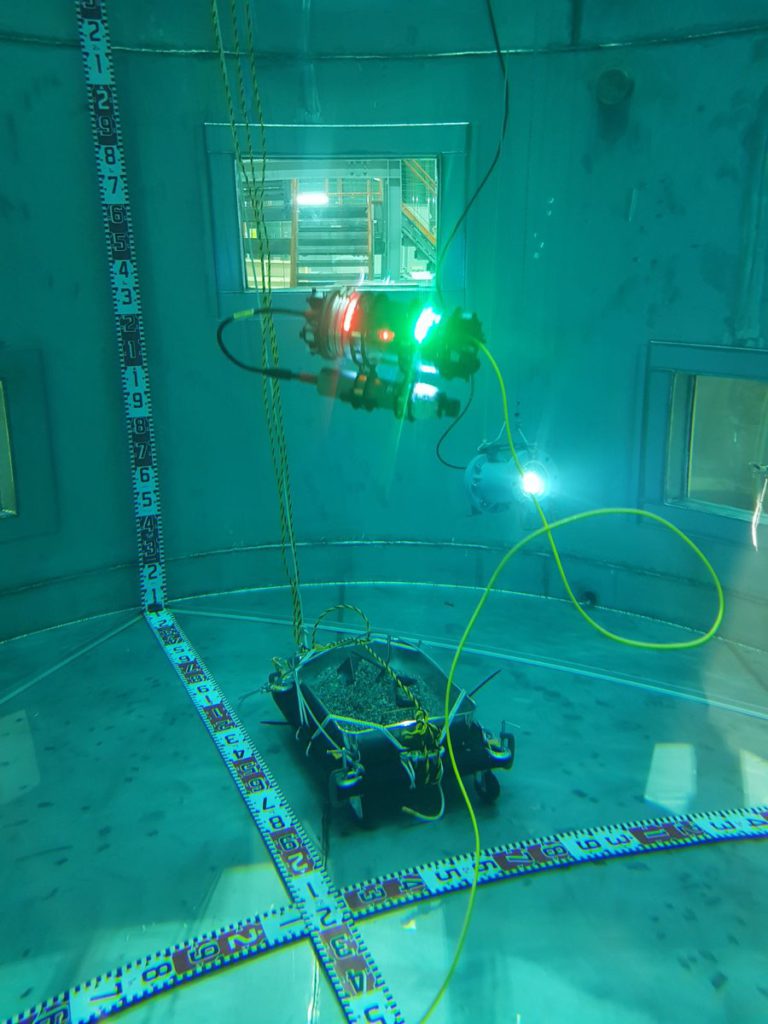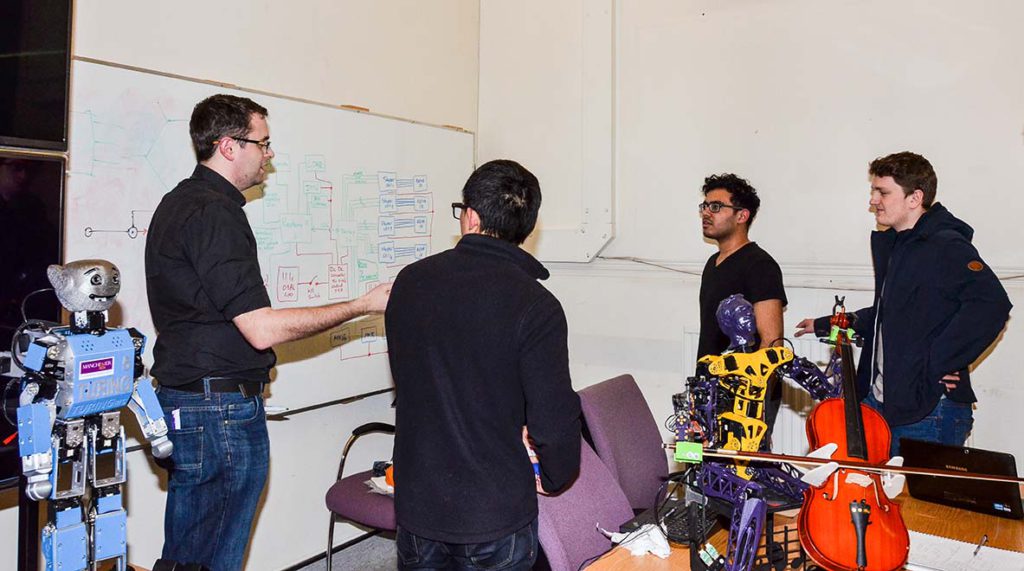The future belongs to legless robots
Departments Our partners Robotics and AI 23rd November 2017
We’ve reached a point where it’s not a question of “if” robots will walk among us one day or even “when”. The real question we should be asking is if these robots should walk at all.
Simon Watson, a lecturer in Robotic Systems at the School of Electrical and Electronic Engineering (EEE), recently contributed a thought piece to The Conversation. In it, he points out that the development of humanoid robots is little more than a “vanity project”. After all, bipedal walking is hardly the most efficient way to travel, so why would you design a robot to walk that way?
Robots in the real world
Some of the most successful developments to happen here at the university involve robots that don’t walk. For example, Dalton Nuclear Institute is leading a programme to create robots able to clean up nuclear waste.
Robotics and Artificial Intelligence for Nuclear (RAIN) Hub is led by Professor Barry Lennox, also of the School of EEE. At the heart of the project is AVEXIS; a little underwater robot able to identify highly radioactive fuel that’s seeped into the water at sites including Sellafield and Fukushima. Here it is in action earlier this year:

“Robots aren’t quite as adaptable as humans and the world isn’t really built for them,” says Professor Lennox. “Even trivial things can be really complicated for robots. They aren’t very good at opening doors. Doors confuse them.”
It’s a comment that Simon Watson agrees with. “After nearly 100 years of development, our most advanced humanoid robots can only just open a door without falling over (too often),” he says.
But maybe the problem lies with us and the fact that we only see robots as failing when we compare them to ourselves. And yet, if not designed in our own image, robots could be capable of doing many things that we can’t.
For example, robots like AVEXIS can move safely in radioactive environments that would put a human’s health at risk. Robots can operate in the most inhospitable habitats, like at the mouth of an active volcano, or a different planet. The unmanned Mars Rovers have been collecting data on the red planet for the last 20 years.
Abandon the vanity project
Simon notes that we need to forget about building robots with a view to them replacing us, and instead design them to answer a specific problem. So, rather than teach an android to walk on uneven ground – for example, to search through rubble for survivors following an earthquake – you would build it with caterpillar tracks so it could move efficiently.
Perhaps we also have to stop recognising robots as such only when they look human. As Simon points out, most planes are flown by robots. There are pilots on-board, but that’s so they can take over in the event of something going wrong. Most of the flight will be controlled by the autopilot, which the pilots programme before take-off.
Then there’re driverless cars; these too are robots, and as the technology improves, they could soon be robots with which more of us are familiar. As Simon explains, driverless cars are just a larger version of a small robot you design to move from one specific point to another.
It makes sense to invest our time and research into creating robots that can complete tasks a human would never be able to – like cleaning up nuclear debris. Having said that, there will always be a fascination with robots competing with humans.
Processing Out Loud

Earlier this year, our Robot Orchestra took part in a BBC challenge to see whether robots could replace Ed Sheeran. And no, we’re not talking about replacing him as an actor – if anyone saw Ed’s cameo on the latest season of Game of Thrones, they’ll already know a robot is capable of putting in a less wooden performance.
Whether a robot can replace the Grammy-winner in the recording studio without anyone noticing is a different matter, though. And yet, as you’ll see here, the Robot Orchestra and its robotic frontman put in a performance that was certainly on a par with Ed – albeit if you close your eyes.
But as fun as this may be, there’s no pressing need to replace Ed Sheeran with a robot. And there are so many areas where our robot friends can help us – if only we can get over our desire to create them in our own image.
Concludes Simon: “There is no doubt that eventually androids will be walking around and talking with us. You’ll pass them wandering down the street or hold a conversation with one as you do your shopping. But for now, the robots of the near future won’t walk like us. Instead they’ll drive, they’ll fly, they’ll swim or they’ll walk on any number of legs – except two.”
Read the full article here.
Words – Hayley Cox
Images – Futurama, The University of Manchester




